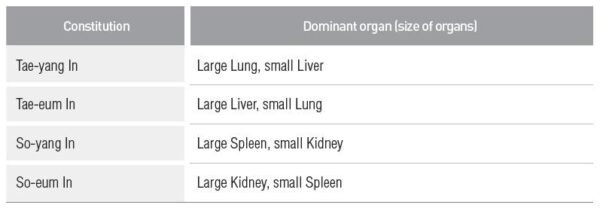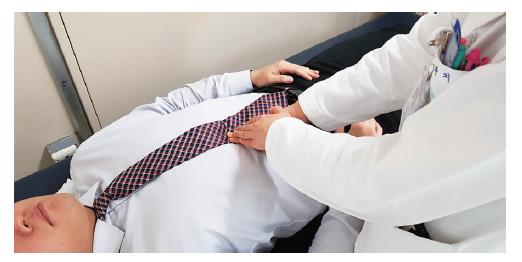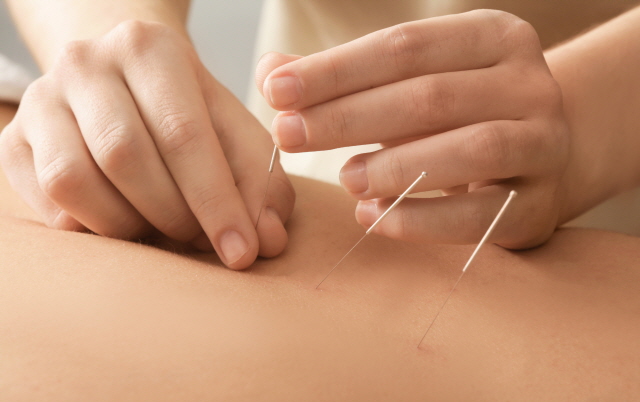- Sanghoon Lee, KMD, MPH, PhD, DiplAc, LAc Professor, Department of Acupuncture and Moxibustion, College of Korean Medicine Kyunghee university
- Dongwoo Nam, KMD, PhD Assistant Professor, Department of Acupuncture and Moxibustion, College of Korean Medicine Kyunghee university
- Jeongmin Ko, KMD, Dr.Jeongmin Ko’s Korean Medicine Clinic (Inc.) All that Korean Medicine
- Hyojung Kwon, KMD, PhD (Inc.) All that Korean Medicine
- Seung Min Kathy Lee, KMD, PhD, Research Fellow Department of Acupuncture and Moxibustion, College of Korean Medicine Kyung Hee University
- Park Jun Hyeong, KMD, MS, Researcher, Department of Acupuncture and Moxibustion, College of Korean Medicine Kyung Hee University
Published in December 2017 by Korean Society of Acupuncture & Moxibustion Society
1. The four constitutions of Sasang constitutional medicine

1) Tae-yang In
- ① relatively large organs:Lung, Spleen, Stomach, Upper Energizer of the Triple Energizer
- ② relatively small organs:Kidney, Bladder, Large Intestine, Liver, Gall Bladder, Small Intestin/e
Female / age 75
Patient with slender build and slanted eyes whose facial expression looks stern, complaining of dysuria. The patient felt severe tenderness at pressure beneath the sternum, that vanished after needling HT3. Additionally, LU9 was sedated and LR3 was tonified. The patient showed improvement of the symptom after 8 treatment sessions in 40-50 days.
2) Tae-eum In
- ① relatively large organs:Liver, Gall Bladder, Small Intestine, Kidney, Bladder, Large Intestine
- ② relatively small organs:Spleen, Stomach, Lung, Upper Energizer of the Triple Energizer
|
Female / age 94 This patient had very lustrous complexion even in old age and a large build for an Asian woman. She suffered from stroke at the age of 92, without past medical history of hypertension or diabetes. She received Taegeuk acupuncture for Tae-eum In once every week for two whole years before departing. At the acute stage of stroke she was unconscious for ten days and suffered from aphasia afterwards which recovered relatively shortly in four to five months. Only slight dysarthria and hemiparesis remained until the patient passed away from pneumonia. |
3) So-yang In
- ① relatively large organs :Spleen, Stomach, Lung, Upper Energizer of the Triple Energizer
- ② relatively small organs:Liver, Gall Bladder, Small Intestine, Kidney, Bladder
| Female / age 29 Depression patient with appearance resembling that of So-eum In. This patient had been diagnosed as So-yang In and So-eum In at different doctors’ offices. She had had quite severe xerophthalmia for a long time, which bothered her almost all the time. When HT3 was tonified she felt immediate relief from eye dryness. Every time she came to the office for acupuncture treatment, SP3 was sedated and KI3 was tonified. She testified that her emotion was much more stable every time she received Taegeuk acupuncture. |
4) So-eum In
- ① relatively large organs:Kidney, Bladder, Large Intestine, Liver, Gall Bladder, Small Intestine
- ② relatively small organs:Lung, Upper Energizer of the Triple Energizer, Spleen, Stomach
| Female / age 54 Tall patient with lustrous complexion and thick, shiny hair. Her build could be expressed as “chubby.” She came to the office complaining of frequent indigestion without signs of gastritis tested by endoscopy. A few days after only one session of Taegeuk acupuncture for So-eum In consisting of tonifying SP3 and sedating LI4, she confirmed over telephone that her chronic symptom was gone. The patient came to the office occasionally for symptoms such as tonsillitis from common cold or back pain from excessive exercise, and every time was treated with the same acupuncture method. |
Domains of the organs of the four constitutions

2. Diagnosis
The judgment of the constitution may be the most important step in practicing Taegeuk acupuncture. It is done by tonifying the controlling Five Element acupoint of the Heart Meridian and tonifying or sedating the source point of the small and large
Organs’ Meridians of an assumed constitution. After placing those three needles, press the solar plexus to confirm the constitution by the tenderness response. When the needles placed are in accord with the patient’s constitution the tenderness is gone about 60-70%, and when the acupoints are not relevant with the patient’s constitution they reply about 20-30% of the tenderness is gone. It is best to do the test 1~2 minutes after practicing Taegeuk acupuncture.

1) Bodily proportion method (primary method of differentiating constitution)
Measure the patient’s body in prone position. Measure the width of the upper and lower parts of the breasts and the width of the base of the 11th ribs and the iliac spines. Tae-yang In has wider upper part between breasts and Tae-eum In has wider lower part between breasts. So-yang In is wider at the ribs compared to the width of pelvis while So-eum In is wider at the pelvis than the ribs.
This method is lacking in accuracy, therefore is to be confirmed by the secondary method of differentiating constitution, the taegeuk acupuncture differentiation method.
2) Taegeuk acupuncture differentiation method (secondary method of differentiating constitution)
Tae-yang In is in Metal excess therefore tonifying the Fire point, HT8, is immediately effective in controlling the energy because Fire controls Metal. Tae-eum In is in Wood excess therefore tonifying HT4, the Metal point of the Heart meridian, takes immediate effect by Metal controlling Wood. So-yang In is in Fire excess therefore tonifing the Water point of the Heart meridian, HT3, takes immediate effect by Water controlling Fire.
So-eum In is in Water excess therefore must be controlled by Earth, thus the Earth point of the Heart meridian, HT7, is tonified and shows immediate effect.

































